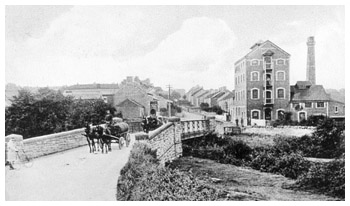
| Pontyclun | |
The 1841 - 42 tithe map of the Pontyclun/Miskin area shows just 30 farms ranging from 20 to 200 acres in size, a corn mill and small cottages at River Row. Compare this with the situation today where we only find 5 working farms left in the same area. The name Pontyclun has only been in official use since 1893 and prior to that the area was known as Pont Clown or Pont y Clown, which is said to indicate that the river was shrouded with trees and undergrowth. Earlier records give an assortment of names including 'Cloune' and 'Clune'. All these were possibly influenced by the name of the River Clun, which flows in a loop around the area. |
|
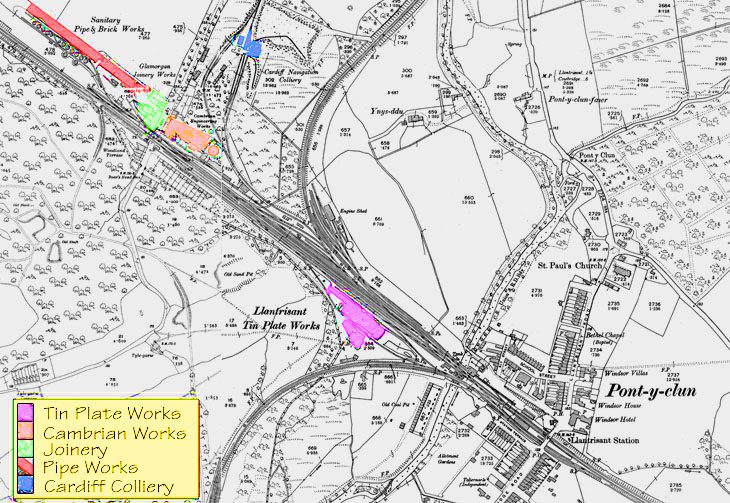 |
|
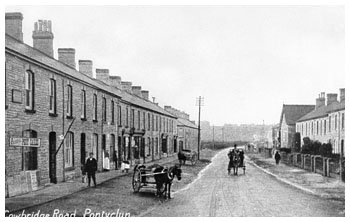 |
It was the influx of workers for the iron ore and coal industry together with the coming of the railway during the 1850's that changed the area for all time. The Coedcae Colliery (first listed in 1856) and the Bute iron ore mine (which opened in October 1852) were the catalyst for the population growth. By 1871, the census returns record an influx of Cornish miners who had suffered from the collapse of the copper mining industry in Cornwall.
Left: Cowbridge Road Pontyclun circa 1900 |
| This large growth of English speakers to the area had a real impact on the local population of Welsh speakers and effectively 'killed off' Welsh as a language over quite a short period. By 1870 the industries of the area had been expanded by the coming of the Ely Tin Plate Works, The Pipe Works and The Steam Joinery Company.The needs of the workforce brought about the building of School Street and Llantrisant Road which were among some of the earliest houses in the area, along with National School built in School Street, c. 1878, Bethel Baptist Chapel (c. 1876) and public houses such as the Bute Hotel and the Windsor Arms. | 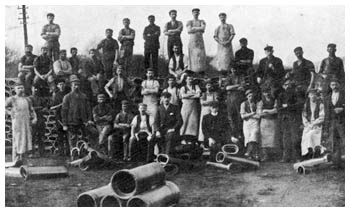 |
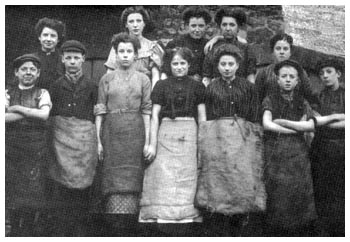 |
The early years of the 20th century saw the building of Pontyclun Institute (1910) to enrich the cultural and social lives of the growing population. By the late 1950's the Institute had fallen on lean times and a was decision was taken to rename it the Pontyclun Athletic Club, which would cater for soccer, rugby and cricket. Pontyclun continues to prosper despite the closure of the pits and ore workings, which had a drastic effect on the area. The start of 'out of town' shopping areas has brought Pontyclun back to life again with retail premises being the main employer now. Commuting to Cardiff and the Vale has also made Pontyclun the ideal location so housing has expanded as a result.
Left: Young workers at the Tin Plate Works circa 1904 |
| CROWN BREWERY PONTYCLUN | |
| The South Wales & Monmouth United Clubs Brewery Co. Ltd. purchased the small family brewery owned by D & T Davies in 1919. This Company had been formed to supply the expanding number of Workingmen's Clubs, which were having difficulties with supply of beer from the many local breweries throughout the area. The Sunday Closing (Wales) Act of 1881 had fuelled the expanding number of clubs that did not have to close on Sunday, as was the case with public houses. Capital for the venture was raised from the issue of shares, which funded the purchase of the brewery for £25,000. In the first year the brewery was producing 200 barrels of 'Club Pale Ale' per week. The head brewery at that time was Captain Rogers who had served as a cavalry officer during the Boar War. | |
By 1936 the brewery was producing 500 barrels per week, which continued to increase to 900 in 1938. This growth was halted by the outbreak of war in 1939 but when the war ended in 1945 the growth took off again. By 1954 the old brewery had been replaced by a completely new building that was big enough to produce the 1200 barrels per week that the clubs demanded at that time. In 1984 Bob Smith was head brewer for the company and was only the fifth in the 65 years the company had been trading. In 1988 Crown merged with Wales's oldest brewery, Buckley's of Llanelly to form the Crown Buckley Brewery but then after 80 years of trading, the brewery closed in the Spring of 1999. |
The Crown Brewery |
